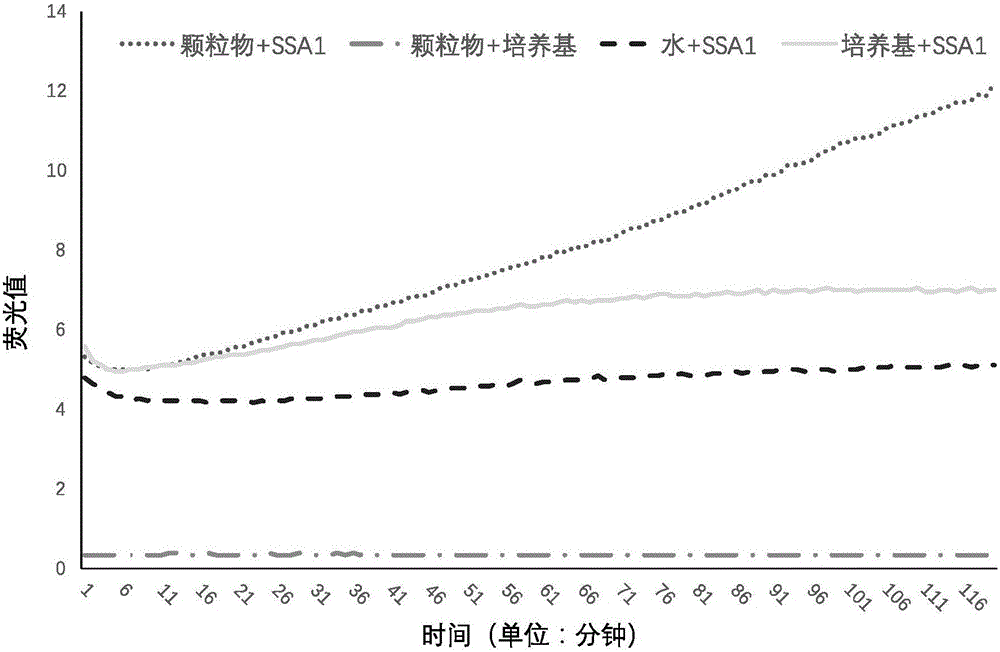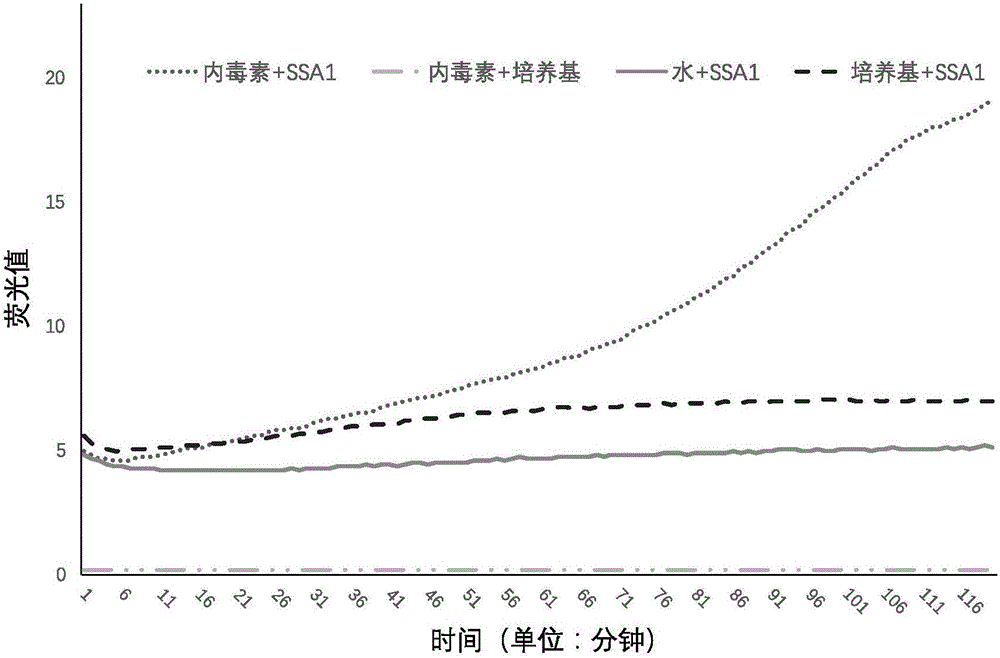Method for detecting biological toxicity of atmospheric particulates
A technology for real-time detection of atmospheric particulate matter, applied in measurement devices, material excitation analysis, fluorescence/phosphorescence, etc., to achieve the effect of high sensitivity and low detection limit
- Summary
- Abstract
- Description
- Claims
- Application Information
AI Technical Summary
Problems solved by technology
Method used
Image
Examples
Embodiment 1
[0027] Embodiment 1. Detection of biological toxicity of atmospheric particulate matter
[0028] (1) Use Teflon sampling membrane and four-channel atmospheric particle sampler to collect PM2.5 particulate matter in Beijing atmosphere, and the sampling time is 24 hours. Weigh the mass of atmospheric particulate matter on the sampling membrane and dissolve it in ultrapure aqueous solution to make a particulate matter solution with a concentration of 0.04mg / mL;
[0029] (2) Add the above-mentioned particle solution solution into a 96-well plate, and add the yeast liquid that utilizes GFP-labeled control SSA1 and HSP60 protein expression gene fragments;
[0030] (3) Put the 96-well plate into the microplate reader, and use the microplate reader to dynamically monitor the change of the fluorescence value of each experimental group in the 96-well plate. The microplate reader reads a fluorescence value every 1 minute, and the reading time is 2 hours, the reading wavelength is 480-52...
Embodiment 2
[0037] Example 2. Detection of biological toxicity of endotoxin
[0038] (1) Dilute the purchased endotoxin sample with a concentration of 50ng / mL to 0.5ng / mL for later use;
[0039](2) adding the above-mentioned endotoxin solution into a 96-well plate, and respectively adding yeast liquids for controlling SSA1 and HSP60 protein expression gene fragments labeled with GFP;
[0040] (3) Put the 96-well plate into the microplate reader, and use the microplate reader to dynamically monitor the change of the fluorescence value of each experimental group in the 96-well plate. The microplate reader reads a fluorescence value every 1 minute, and the reading time is 2 hours, the reading wavelength is 480-520nm;
[0041] (4) Analyze the fluorescence value recorded by the microplate reader, and the fluorescence value detection result after 2 hours is as follows: image 3 and Figure 4 shown.
[0042] Experimental results:
[0043] 1. From image 3 It can be seen that compared with ...
Embodiment 3
[0047] Embodiment 3. Compare the biotoxicity of different urban atmospheric particles
[0048] 1. Use the four-channel high-flow atmospheric particle sampler and TEFLON sampling membrane to collect PM2.5 samples from different cities such as Beijing, Guangzhou, Lanzhou, and Haikou.
[0049] 2. Make the collected samples into a particle solution with a concentration greater than 0.02mg / mL for later use.
[0050] 3. Add the above-mentioned particle solution into a 96-well plate, and add the yeast liquid that uses GFP-labeled gene fragments to control the expression of SSA1 and HSP60 proteins.
[0051] 4. Put the 96-well plate into the microplate reader, and use the microplate reader to dynamically monitor the change of the fluorescence value of each experimental group in the 96-well plate. The microplate reader reads a fluorescence value every 1 minute, and the reading time is 2 hours , the reading wavelength is 480-520nm.
[0052] 5. Analyze the fluorescence value of the part...
PUM
 Login to View More
Login to View More Abstract
Description
Claims
Application Information
 Login to View More
Login to View More - R&D
- Intellectual Property
- Life Sciences
- Materials
- Tech Scout
- Unparalleled Data Quality
- Higher Quality Content
- 60% Fewer Hallucinations
Browse by: Latest US Patents, China's latest patents, Technical Efficacy Thesaurus, Application Domain, Technology Topic, Popular Technical Reports.
© 2025 PatSnap. All rights reserved.Legal|Privacy policy|Modern Slavery Act Transparency Statement|Sitemap|About US| Contact US: help@patsnap.com



